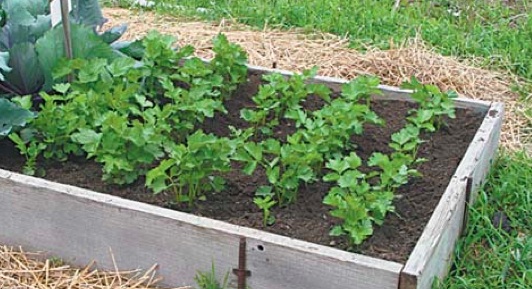Raised beds aid gardeners

By Linda Dolak
OSU Ext. Master Gardener Volunteer
Gardening in raised beds was common before colonial times.
Today, it is again popular, especially with home vegetable gardeners.
We can walk around these gardens, even sit on the edges to work them.
We do not have to wait as long for the soil to dry out and warm up, allowing for earlier working and planting.
The word “raised” means the soil is higher than the ground. “Bed” refers to a space that is small enough to work in without actually stepping onto the raised soil.
A bed should not be wider than 4 feet to allow the gardener to reach across for tending it. A raised bed does not have to be enclosed or framed, but a frame will keep the soil in place.
A raised garden allows for more production. Plants can be placed closer together, and gardening can be done from both sides. The plants are put just far enough apart to avoid crowding but close enough to shade weeds.
Also, raised beds offer improved soil conditions compared with native soil. It is much more difficult for plants to grow in tight soil — such as clay — than compost or other topsoil you add to a raised bed. Tight, compacted soil can reduce a crop size by one half because it has less air movement and less water-holding capacity and does not allow roots to grow as well as they could.
Raised gardens also work well in low areas where water pools for long periods.
To make a raised garden, keep the bed narrow and make sure it is not longer than your water supply reaches. A north-south direction works best for low-growing crops because it allows direct sunlight to both sides of the bed. Place taller crops, such as pole beans or caged tomatoes, on the north end and shorter crops to the south.
The best materials for a frame are chemical-free, pressure-treated wood, redwood, cement block or brick. Bales of hay or straw also are effective.
At least one-third of the soil should be from existing soil. Even clay can be loosened with one-third compost or peat and one-third coarse sand. To get a desirable soil for your garden, take into consideration water drainage, moisture condition, wearing away of the soil, texture, fertility and pH (acidity or alkalinity). Add a small amount of garden fertilizer, and have the soil tested after the first year of growing.
Raised beds work best when 2 feet or higher because they require less bending, contain enough soil for good root growth, and can even have benches on the side so you can watch your plants grow.
Some popular crops that do well in raised beds are blueberries, strawberries, lots of vegetables and flowers. Be sure to learn what a crop needs before building your bed. For example, blueberries take a very low pH (acid) which should be done before planting.
You can convert your raised garden into a cold frame, which acts like a mini greenhouse. They can keep tender plants producing a month or two past the first frost, or maybe all winter. If you want a fresh salad for Christmas, a cold frame may allow you to do that. Some crops that do well in cold frames are root crops, herbs, lettuce, spinach, kale and chard.
Beds 2 feet or higher can be used as cold frames because the bed warms quicker than the ground.
They are inexpensive and easy to make. Build them the same as a raised bed frame, and simply cover it with a lightweight clear plastic, or a discarded window sash so air will not escape.
 43
43
